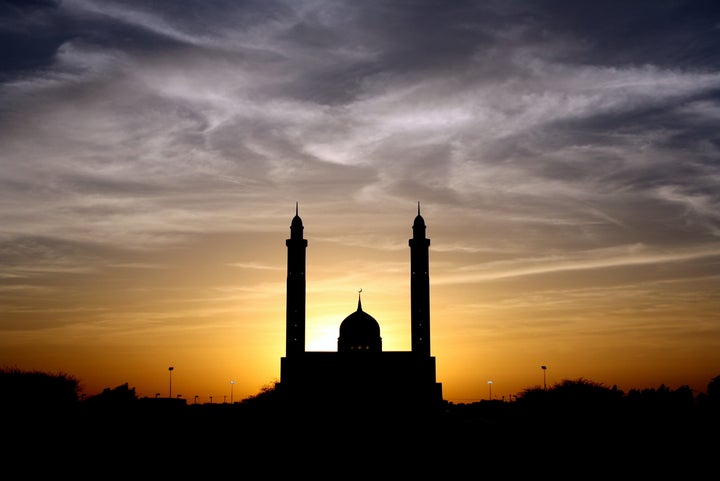
I first heard the expression, “bread and circuses” in 11th grade European History during a unit about Ancient Rome. A political idea in American discourse predicated in the notion that masses can be controlled if given bare means to sustain. If they are fed and entertained it suffices as distraction while governments rule as they deem fit.
We found it laughable, foreign. Democracy was designed to prevent diplomacy from being opaque. But a malignancy began growing when our new president took the oath of office. And as his administration ― an unknown quantity ― touted white-nationalist and anti-immigrant agendas, this seemingly fictitious idea crystallized into reality.
Being anything but plain vanilla in America right now is frightening. On the spectrum of too little and too much of anything we pivot left, airing on the side of caution. And while we celebrate our histories an insecurity secretly plagues the minds of second-generation Americans of color and the cultural “misfits.”
Beyond optics, identity is the cumulative sum of our biology and experiences. And while some tenets of identity are fluid, other tenets are engrained. Last weekend 30+ anti-Muslim [semantic match being anti-Shariah] protests were organized around the country, contradicting the efficacy of reason. These marches triggered an urgency to share this narrative. A narrative on what it means to be multi-hyphenated in Trump’s America.
Last year, several Muslim women I know quit wearing hijab. Shifts in identity prompt curiosity but I never felt appropriate asking “why.” I assumed it was a derivative of fear. One woman — we’ll call her “N” — was a unique case. For measure, she carried the weight of being a first-generation daughter of Pakistani parents, a practicing Muslim, an educator of students with disabilities, and the wife in a bi-racial marriage. Her husband, a first-generation Sudanese American. A black Muslim. N opted for Saudi Arabia to teach English to students who are Deaf and Hard of Hearing after undergrad, and returned to the States to pursue a Master’s to hone her craft. So I wondered why she stripped herself of an identification she held sacrosanct.
In broad strokes, N’s decision was due to severe discrimination she faced in her workplace, a school. The parents of her students made accusations ranging from preaching religion in the classroom to jeopardizing the safety of their children. They conspired against her on the basis of her being Muslim, the only indicator of which was her benign headscarf. The incidents became intolerable and ultimately led her to leave school one afternoon and not return. “I should have left long before I did” she recalled.
“Making the decision to wear hijab can oftentimes feel like coming out of the closet. And then negative experiences have a way of forcing you back into it.”
She went on, “The hijab, for me, was an expression identity. A way of being true to myself. But eventually I felt I was walking around with a target on my head.”
Now, she explained, admitting she’s Muslim to strangers evokes angst. “My current boss wanted to see the speech from my master’s graduation ceremony and I never showed her. At first I didn’t know why, but I realized later that I didn’t want her to know I wore hijab. I didn’t want it to change her perception of me.”
We don’t talk enough about shouldering anxiety. Succumbing to the convoluted characterizations of minority Americans spewed for the last 18 months, has a deeply demoralizing impact on the human psyche. It has pushed people to hyper-police themselves, fearful of being too overtly anything and complacent in being ambiguous. N explained she had never resented wearing hijab. Having to take it off due to anxiety was “not liberating at all.”
I asked her what could reverse the anxiety. She paused and asserted, “I can’t see myself wearing hijab in America under the Trump administration.”
N and her husband, H, met in college and have now been married two years. I wondered how being in an interracial marriage curbed the anxiety that surfaced. So I probed.
“The difference between me and H is that he’s always been black. He’s never had the luxury of changing his appearance to feel safe. He resigned himself to discrimination as a kid” N said.
“On the ‘dealing with discrimination’ continuum,” she explained, “I’m kind of a beginner and he’s really advanced.”
She said H found her anxiety unusual. “He married this brave girl who just moved here from NYC. And then suddenly I was nervous about leaving the house. I even quit going to the post office.” For context, the post office was located in an unincorporated region of the township where foot traffic skewed low-income Caucasian.
This catapulted into a discussion on the criminalization of black men. “I think about it and H is the most intelligent, clean-cut guy I’ve ever met in my life. The public doesn’t always see that because he meets the eye as a black man.” H is American-born, his first language is Arabic and is culturally Sudanese.
Having visited Sudan prior to the notorious Muslim Ban, she educated me on the nuances of Sudanese culture. And that to be distinctly Sudanese was to be an Arabic-speaking African. Shade being a key identifier.
N reflected that news of N and H’s engagement among their respective South Asian and Sudanese communities was met with shock. They were each other’s first choice, and that repudiated the distorted cultural beliefs that if you marry out of your culture, it’s because you couldn’t find someone within.
She went on to describe her dad’s apprehensions about marrying H. “It took him a while to come around because he thought I was taking a harder route than I needed to take. He always wanted all our [siblings] lives to be easy. To take the path of least resistance.”In hindsight she told me she realizes her father understood early on what it meant to be black in America.
They both have shared accounts of being first generation immigrant children and have embraced each other’s cultural norms, which in practice are very similar.
“We have to be reminded and consciously talk about the fact we’re different.” N said.
N told me what she missed most about wearing hijab, among other things, was championing the image of a truly interracial ― oftentimes confusing ― Muslim couple. “People would never imagine a light-skinned hijabi would be married to a Black American man. It’s silly to think about. They’d ask, ‘are you guys Moroccan? Are you from the Emirates?’ ”
As N spoke I wondered, is there a salve for discrimination other than resistance? Minorities often flow into homogeneity when they feel afraid and out when they feel empowered. Assimilation under the guise of progression can be incredibly taxing.
In the midst of this heavy chat, I took a tangent, so I asked N tell me something that’s been an adjustment after marriage. Expecting to receive the quintessential “my-husband-leaves-wet-towels-on-the-floor” anecdote.
She told me that her and H had established a safety protocol. If H is ever to get pulled over, N is to record by default as a precaution. So she narrated to me an instance in which this did happen.
“It was nothing. It was fine. He didn’t indicate on a right turn.” The officer was cordial.
“But I had just seen what had happened to Philando Castile. And I was sitting in the passenger seat as my husband was getting pulled over. Praying we’re not the next viral video” she said.
I shifted in my chair and felt a brisk wave sweep down my spine.
“That.” N said, “That is new to me.”
